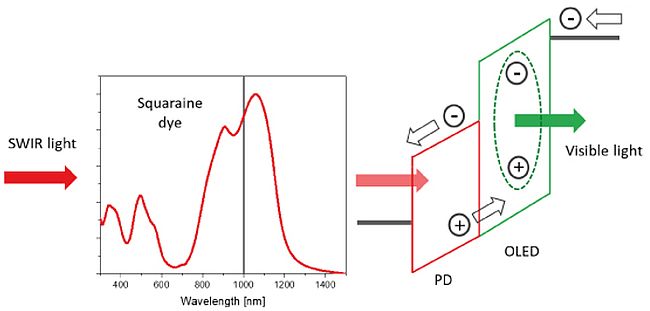Devices that can see shortwave infrared light, which is invisible to the naked eye, could soon become cheaper and more accessible to a broader consumer base.
Tsukuba, Japan, Apr 16, 2021 – Scientists in Europe have designed an organic dye-based device that can see light waves in the shortwave infrared (SWIR) range. The device is easy to make using cheap materials, and is stable at high temperatures. The findings, published in the journal Science and Technology of Advanced Materials, could lead to more widespread use of inexpensive consumer SWIR imaging and sensing devices.

The human eye can only detect a very narrow segment of the electromagnetic spectrum, from around 400 to 700 nanometers. The SWIR region, on the other hand, extends from 1,000 to 2,500 nanometers. Specially designed cameras can take images of objects that reflect waves in the SWIR region. They are used for improving night vision, in airborne remote sensing, and deep tissue imaging. The cameras also help assess the composition and quality of silicon wafers, building structures and even food produce.
“These cameras are typically difficult to manufacture and are quite expensive, as they are made of inorganic semiconductor photodiode arrays interconnected with read-out integrated circuitry,” says Roland Hany of the Swiss Federal Laboratories for Materials Science and Technology.
Hany worked with colleagues in Switzerland and Italy to design an organic dye-based ‘SWIR upconversion device’ that efficiently converts shortwave infrared light to visible light.
The device uses organic (materials made with carbon) components: a squaraine dye-coated flexible substrate combined with a fluorescent organic light-emitting diode (OLED). When the dye absorbs SWIR waves, an electric current is generated and directly converted into a visible image by the OLED.
The team had to play with the molecular composition of several squaraine dyes to get them to absorb specific wavelengths. Ultimately, they synthesized squaraine dyes that absorb SWIR light beyond 1,200 nanometers and remained stable up to 200 degrees Celsius. The finished dye-based device performed stably for several weeks under normal laboratory conditions.
“All-organic upconverters could lead to applications that can’t be realized with current technology. For example, invisible night vision devices can be directly integrated into car windscreens without affecting the visual field,” explains Hany.
The team is now working on shifting the dye’s absorption further into the SWIR range. They are also using machine learning techniques to find new dye molecules capable of sensing SWIR waves. Finally, the team aims to improve device stability and sensitivity.
